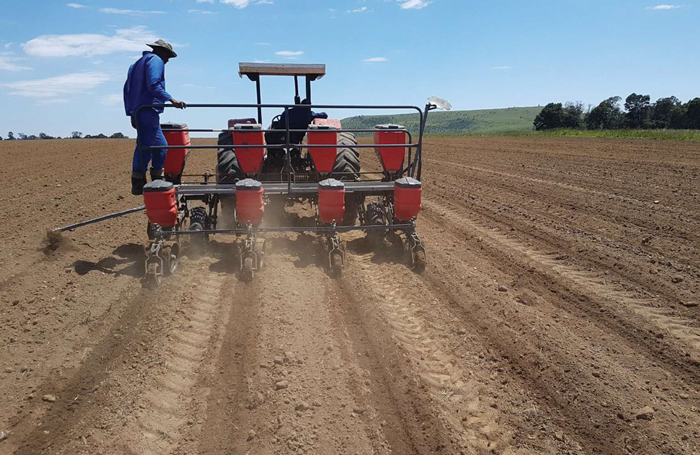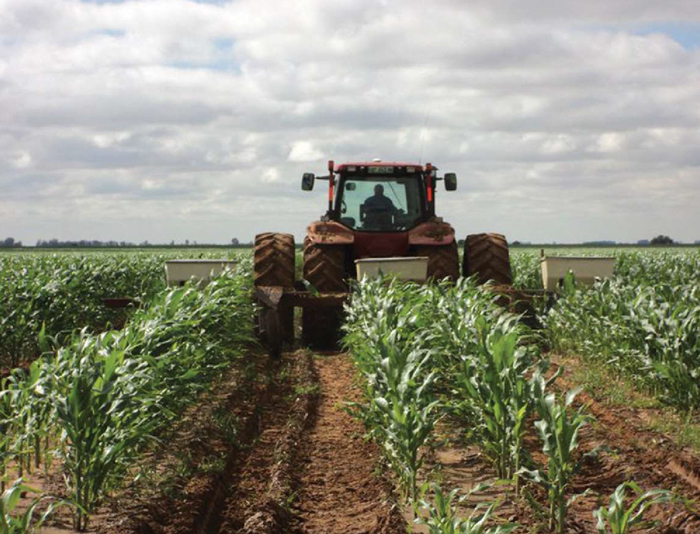December 2020
| Jenny Mathews, Pula Imvula contributor. Send an email to jennymathews@grainsa.co.za |  |
Traditionally speaking a threshold is the floor at the very point of the entrance into a building or a room – when one enters that space, one crosses the threshold. It can also refer to a particular moment in time, for example on old years eve at 12h00 we stand on the threshold of a new year, and when a bride is dressed in her wedding attire ready to be married she stands on the threshold of a new life with her husband.
In the same way we can look at the farmers’ calendar and recognise there are a few special moments in the season which are threshold moments. An experienced farmer will instinctively know what the thresholds are, but a new or developing farmer must learn about thresholds in farming and more especially, he or she must learn to ask questions about thresholds specific to the region he or she is farming in by picking the brains of older farmers and agricultural experts with experience. Knowing threshold dates for each crop is important ammunition in the farmer’s toolbox!
So what are these thresholds that a farmer needs to know about? There are optimum thresholds for planting, weed control and pest control and for harvesting. In this article we will look at planting thresholds.
IDEAL PLANTING DATES
A common challenge faced by developing farmers is sourcing the finances to buy the inputs for their crops in good time. Farmers need to get to work early on putting together a convincing and credible business plan and then presenting it to potential financiers. We have also seen so many instances where the farmers have been nominated as beneficiaries of a wonderful project – but then either the financing is released too late, or the inputs are delivered too late and this prevents the farmer from action in the fields in good time and he cannot capitalise on the optimum planting dates.
This is so frustrating because the crop is already disadvantaged before it is even out of the starting blocks and the yields will most certainly be compromised. One of the responsibilities we have taken seriously as the Grain SA Farmer Development team is to lobby and educate other role-players about how critically significant threshold or optimum planting dates are to the success of a crop.

Make sure you know the optimal planting thresholds.
Photo: Jenny Mathews
Warm months
On the practical side we know that maize is a warm weather crop. Maize needs a certain guaranteed number of heat units in order to thrive and grow. Ideal temperatures should be between 10°C to 15°C for planting your maize. So it does not help to get a crop in the ground too early either.
The secret is to wait for the season to reach more stable and consistent temperatures as this ensures more uniform emergence of the young plants. If late rains force you to plant later than ideal, then it is important to know that you must adapt and possibly look at planting one of the ultra fast growing maize cultivars or alternatively not plant maize at all and look at another shorter growing crop. The first three weeks post planting are critical to the success of the crop and the prevailing conditions will influence crop potential.
Make sure you know the optimal planting thresholds as well as the ‘it’s too late to plant anymore’ thresholds.
Colder months
We cannot forget that another threat to the crop comes at the end of the growing cycle with the onset of the colder months. A maize plant needs between 120 to 140 frost free days depending on cultivar. For this reason one can’t risk planting the maize seed too late because frost on still-maturing maize plants can cause significant yield losses.
There is also an ideal harvest time threshold – that moment in time when most plants have fully matured. We know many developing farmers who are pressured by livestock owners to get their crops off the fields so the cattle can be let out to graze on the maize lands. Time and again this spells trouble. A maize cob harvested with too high moisture content will shrivel, lose weight and more worrying, is very likely to get damaged or diseased. The yield will be unnecessarily compromised if the harvesting window is ignored.

Just managing to complete topdressing.
Photo: Jenny Mathews
Region specific dates
We talk about a window of opportunity but it is also important to remember that planting dates are region specific. A good time to plant maize in Mpumalanga is quite different to what is a good time to plant maize in the North West. Both the moisture levels in the soils and the temperature of the soils will need to be at the ideal threshold levels for the seeding to be successful.
If you know your ideal planting thresholds and can stick within those dates, the crops will have the best chance to produce the highest yields because it is then that a plant is afforded every opportunity to thrive and reach full physiological maturity in favourable climatic conditions with (hopefully) good rainfall, adequate sunlight and heat units with moderate evening temperatures.
KNOW YOUR OPTIONS
Farmers need to be informed and alert. There needs to be a plan of action in the back of every farmer’s mind as to how he will address fluctuations to the norms.

Publication: December 2020
Section: Pula/Imvula